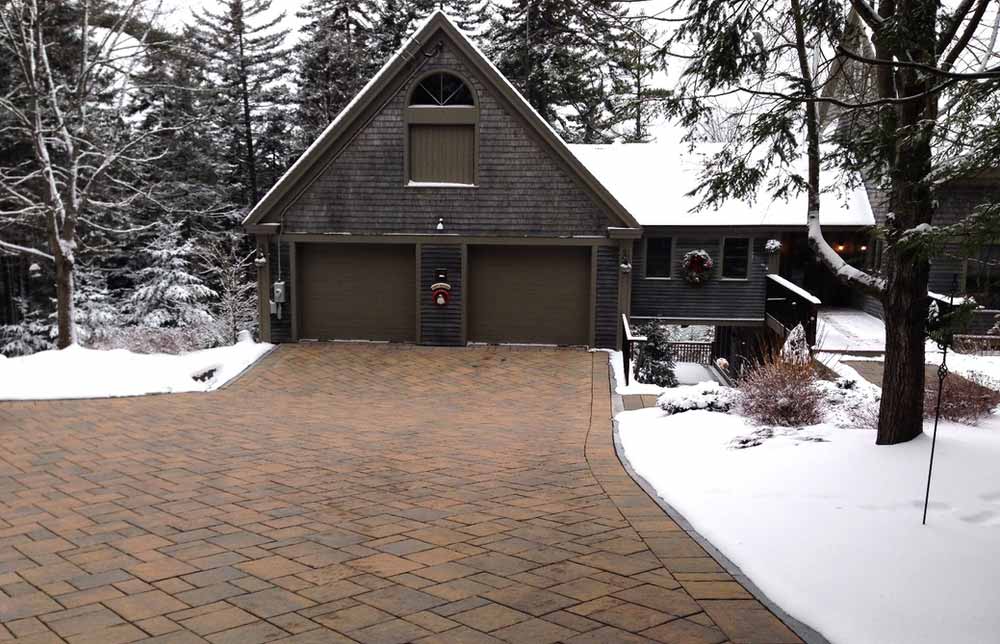
In 2016, we published an article The ABCs of Snowmelting which stands as an introduction to the world of snow melting. It contains a wealth of information about the types of snow melting systems available and their installation details. We still receive calls daily asking us to clarify the difference between types of snow melting systems. To simplify the subject and help explain it even further, if you want radiant snow-melting you have two options: hydronic or electric.
Hydronic Systems
Hydronic systems get their name from the fact that they use water, well a mixture of water and glycol, as the medium of heat transfer. A heat source, such as a boiler, warms the fluid to a predetermined temperature. A circulating pump will flow the fluid through the system which will consist of tubing, heat exchange panels, or both. The tubing or panels are installed beneath the paved surface. The energy from the warm fluid will transfer into the cooler paved surface and raise its temperature. If the surface is warm enough, the snow will melt and evaporate, or runoff into a drainage system.
Hydronic systems generally have higher first costs due to the mechanical system required for operation. However, they are much more efficient to operate compared to electric systems due to the cost of fuel which depends on the source of heat used. This makes them more suitable for larger areas where higher energy output is needed. Hydronic ThermaPANEL systems can also be used to collect solar energy creating a potential for system payback.
Electric Systems
Electric cable systems are much simpler in terms of moving parts. Instead of water flowing through tubing or heat exchange panels, the heat is created from an electric current traveling through resistance cable. The electric current heats up the cable and the energy is transferred into the paved surface through bedding sand.
Electric systems have lower first costs. Electric cable mats can be rolled out and tied into the existing electrical system. Due to the higher cost of electrical energy compared to direct gas or oil these systems are generally much more expensive to operate. Because of this, electrical systems are not practical for large areas. Also, electric systems are much more prone to failure due to wire burnout or damage and are known to cause concrete spalling due to uneven heating.
Pedestal Paver Heating and Cooling
ThermaPANEL hydronic systems are specifically designed to heat and cool pedestal pavers in a variety of construction methods and applications. Recently, electric cable manufacturers have begun laying their cable systems in metal trays to heat pedestal-mounted pavers. These systems still have the advantage of first costs but are more expensive for long-term operation and larger areas. They also lack modularity and ease of repair and the ability to provide comfort cooling.
ThermaPANEL systems allow you easy access to the roof deck below, and the modular design means you get efficient heating and cooling where it’s needed, without sacrificing access to the roof below. ThermaPANEL systems can also cool the paver surface and provide thermal solar energy to heat a pool or spa.
For more information on snow melting systems for pedestal-mounted pavers, download our brochure or contact us today.
